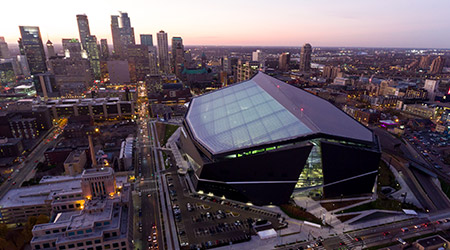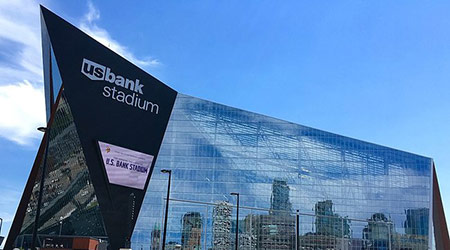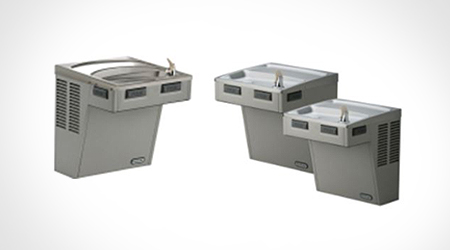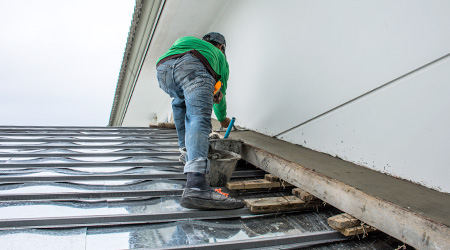
Super Bowl Stadium Uses Advanced Roofing Material
February 2, 2018
There are roof leaks, and then there’s this – in December 2010, after a huge snow storm in Minneapolis, the Metrodome’s roof began leaking and then dramatically collapsed under the weight, spilling snow over the venerable green of the football field. It’s some pretty dramatic video!
So when you heard that this year’s Super Bowl is being played in Minneapolis, after you thought something along the lines of, “Hm, Minneapolis in February, huh? Delightful,” you also probably remembered that video and wondered if they’d made any improvements. Never fear, they have.
A new facility, US Bank Stadium, opened in 2016 to replace the 30-plus years old Metrodome. The new facility features a state-of-the-art, or “space age,” as the Vikings call it, roof that will help ensure that lightning, as it were, doesn’t strike twice.
A lightweight material called ETFE - ethylene tetrafluoroethylene – covers 60 percent of the roof, the first application in the country at this scale, says the Vikings. And the roof was designed with a dramatic slope with the harsh winter climate in mind. “The purpose is to shed snow off the roof efficiently into a giant snow gutter near the roof line that features a heating system to direct the melted snow through the stadium’s storm water control system,” says the Vikings.
The roof material and design were two key elements that allowed the Vikings to achieve a LEED Gold certification for the stadium in 2017. The Vikings offset 100 percent of the stadium’s energy use with renewable energy credits and the stadium is working towards a goal of being a zero-waste facility.
So whether you're an Eagles fan, a Patriots rooter, or just watching for the commercials, you can rest assured the players and fans inside the stadium won’t be treated to a mid-game snow shower.
This Quick Read was submitted by Greg Zimmerman, executive editor, Building Operating Management. Read his cover story on the how sustainability and resilience complement each other.
Next
Read next on FacilitiesNet












